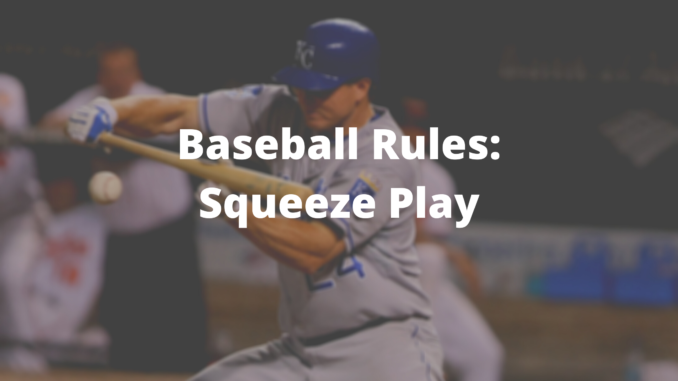
In baseball, a squeeze play occurs when a batter attempts a bunt while a runner is on third base with the expectation (and hope) that he will be thrown out at first and the runner will score a run.
There are traditionally two types of squeeze plays:
- Safety Squeeze
- Suicide Squeeze
You can find a 5-minute compilation of squeeze plays on Youtube:
Of course, you can also find a 3-minute compilation of failed attempts:
Safety Squeeze
A safety squeeze is when the runner on 3
Suicide Squeeze
A suicide squeeze is when the runner on 3
It is important for the offense to not in any way signal to the defense that a suicide squeeze is in play. If the pitcher and catcher realize, then they can coordinate a pitchout, which will almost always end up in the runner being tagged out (as well as an awkward attempt by the hitter to get the bat on the ball).
2 Runs on a Suicide Squeeze? Only if You “Cheat”
One of my favorite squeeze plays is the play in the video below where the runner on the second base recognizes that all attention is at home plate and no umpires are likely to be watching him. This results in him taking a shortcut and quickly sliding in behind the catcher.
Cheating? Some would say only if you get caught.
When do Teams Call for a Squeeze Play?
One of the more common times that managers will call a squeeze play is when the scored run wins the game (i.e., a walk-off sacrifice bunt). But managers will also call for squeeze plays during the later innings of close games.
How Can Pitchers Defend Against the Squeeze?
There are a few things pitchers can do to protect against a squeeze play. These are particularly effective against suicide squeezes:
- Do not pitch from the windup. With a runner on third and less than 2 outs, pitchers absolutely need to pitch from the stretch.
- Pickofff attempts: Don’t let the runner on third get too comfortable with a lead.
- Pitchout: If the pitcher/catcher have a good read that a squeeze play is on, they can coordinate a pitchout in an effort to catch the runner stealing
- Jam the hitter: Pitch high and inside. The batter is committed to making contact, and this is likely to force a bunt that can be fielded cleanly with a chance for a play at the plate.
- Hit the hitter: Some may not see this as ideal–but others do–but hitting the batter will prevent the runner from advancing (i.e., scoring)

